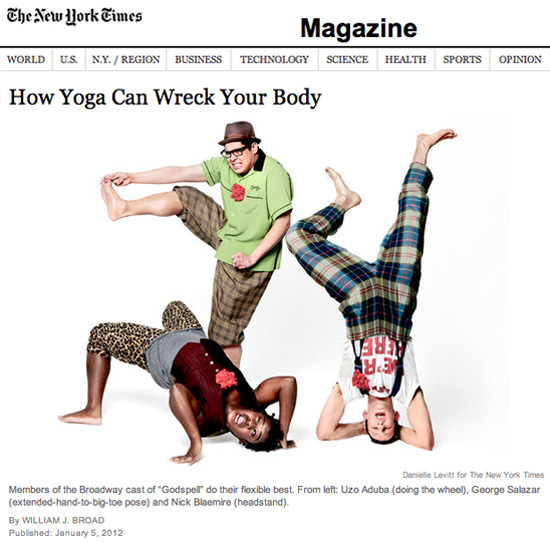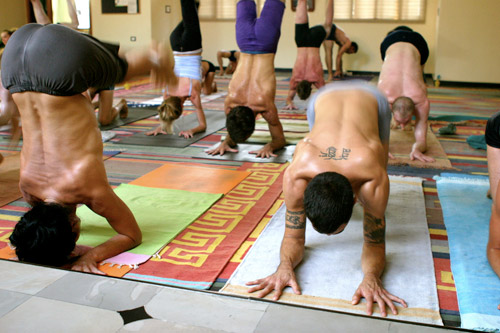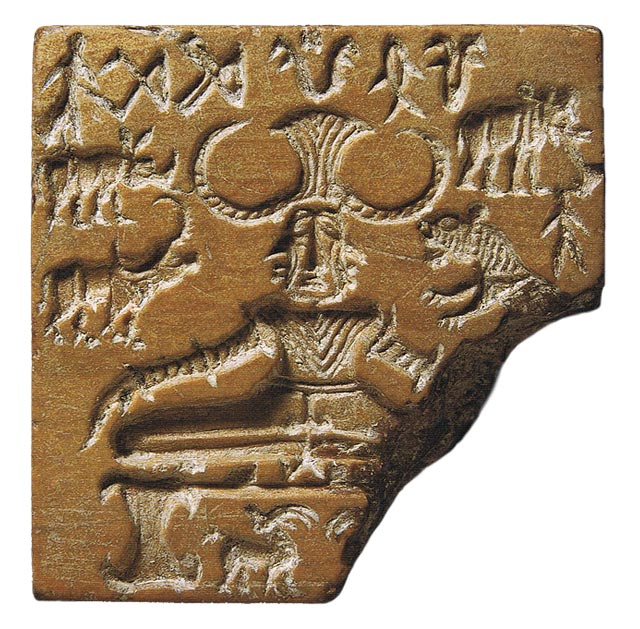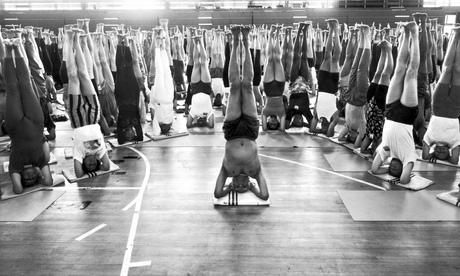The styles of yoga on offer are endless. Teachers often blend different practices to suit their needs, and give it a name that ends up on a class schedule, familiar only to those who frequent the studio. Most types of yoga stem from a few different schools, which have splintered into countless directions.
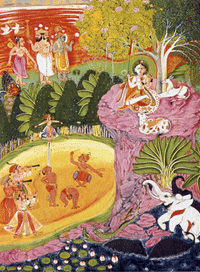 Yoga as we know it in the West—physical yoga—is but one of many types of yoga. It is called hatha yoga. Our appropriation of the term hatha to describe a style of physical yoga strays from the traditional Indian usage of the term. For most Indians, the term yoga is most closely associated with rajayoga philosophy, or with dhyana, meditation (though that’s changing due to hatha yoga’s popularity in the West). Unlike the general western concept of meditation, dhyana is not specifically body-oriented. It doesn’t necessarily mean seated meditation, nor does it necessarily exclude the body or hatha yoga.
Yoga as we know it in the West—physical yoga—is but one of many types of yoga. It is called hatha yoga. Our appropriation of the term hatha to describe a style of physical yoga strays from the traditional Indian usage of the term. For most Indians, the term yoga is most closely associated with rajayoga philosophy, or with dhyana, meditation (though that’s changing due to hatha yoga’s popularity in the West). Unlike the general western concept of meditation, dhyana is not specifically body-oriented. It doesn’t necessarily mean seated meditation, nor does it necessarily exclude the body or hatha yoga.
When reading about types of western yoga, keep in mind that any physical yoga is hatha yoga (I won’t italicize when speaking in western terms), but it is also used to describe a style of yoga. More on that in the schools section.
Other types of yoga, as per Vivekananda‘s interpretation, which is, if not historically accurate, how yoga is commonly understood today, are:
raja yoga: cultivation of the mind/meditation
karma yoga: discipline of action
bhakti yoga: blissful devotion to the divine
jnana yoga: path of knowledge
In the West, we are best acquainted with hatha (physical) yoga, and usually use the term loosely to describe yoga that is fairly basic, slow, and relaxing, probably because it was associated with Sivananda and Integral Yoga, who also practice raja, karma, and bhakti yogas, and so they logically designated their fairly basic physical practice as hatha. And then everyone else did too. If you are new to yoga, a beginner’s hatha class is a good place to start, especially if you are out of touch with your body.
Because “hatha” is used so generally, ask what the class is like before you show up.
Sivananda, Ashtanga, Iyengar, Integral, and Kripalu are all traditions of hatha yoga founded by Indian gurus. They all stress the spiritual aspects of yoga and include chanting, as well as short periods of meditation. Viniyoga developed from the teachings of T. Krishnamacharya and his Madras-based student-son T.K.V. Desikachar. It stresses the adaptation of yoga practice to the needs of each person.
Keep in mind, these styles of yoga are hatha yoga. Viniyoga and Kripalu would also consider themselves to be styles of vinyasa as well. While other types of yoga, e.g. Iyengar, Ashtanga, Power Yoga, Bikram, etc. are not generally thought of as hatha in the west, they are hatha yoga in the physical sense and may be thought of as such.
…
